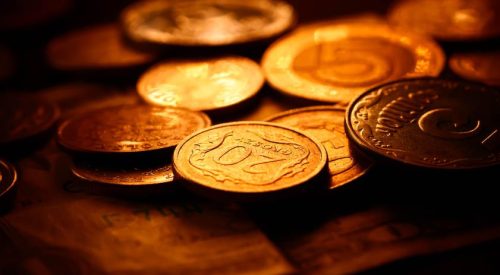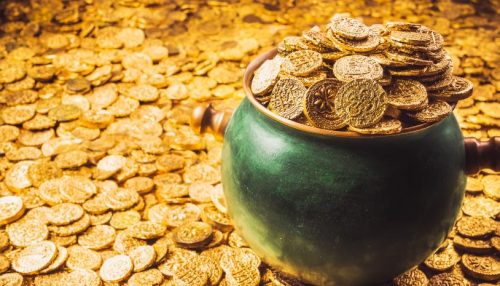When you think of the term ‘mint’, it’s easy to imagine the fragrant plant, or the delicious sweets that are made from it. However, in financial terms, a mint refers to an organisation that produces and manages a country’s currency.
Currently, there are 70 government-owned mints and 40 private ones around the world, producing currencies in various denominations that help fuel the global economy and drive each individual country towards success.
One of the most mints in the world is the South African Mint. Originally a public organisation, it was transferred to the ownership of the South African Reserve Bank in the 1980s, but it still remains committed to supporting the needs of the country’s people, as it has throughout its history.
Responsible for one of the most recognisable coins in the world, the Krugerrand, the organisation has played a major role in shaping the country into the global economic player that it is today.
From closure during British occupation to a fresh start in the swinging sixties and beyond, the South African Mint has had a colourful and turbulent history and has emerged as one of the leading mints in the world. It is still in use today and has been instrumental in driving the success of the South African nation.
Keep reading, and we’ll explore the history of the South African Mint and how it has worked to put the country on the map since its foundation more than 120 years ago.
How The South African Mint Came Into Being?
The South African Mint was established by President Paul Kruger, who decided that a mint was important for the country following the discovery of gold near Witwatersrand in 1886. The mint was officially established a few years later, in 1890, and it opened its doors in Pretoria on July 6th 1892.
 Throughout its life, the mint has been owned by many organisations. In the 1980s, it became a wholly-owned subsidiary of the South African Reserve Bank, and has led the charge in creating the country’s currency and helping to give it a well-deserved reputation for resilience.
Throughout its life, the mint has been owned by many organisations. In the 1980s, it became a wholly-owned subsidiary of the South African Reserve Bank, and has led the charge in creating the country’s currency and helping to give it a well-deserved reputation for resilience.
Closure Of The Mint
Following the British occupation of South Africa in 1902, the mint was closed in 1919 as the pound sterling became the official currency of the country, and the mint was no longer required to produce a South African currency.
The British Mint Act of 1919 helped to allow the UK’s Royal Mint to build a branch in South Africa to produce Round Sterling, the currency that the occupied country used.
Creating The Rand
In 1961, South Africa gained independence from the British and became its own Republic. A drive to abandon the pound as a currency and establish a new one had been in progress since 1956, and the Rand was introduced in 1961 to commemorate the changes that the country was now seeing.
Over the years since it was introduced, the Rand has had many ups and downs, but it has remained the currency of South Africa since its introduction. It’s now a well-known currency that can be purchased globally and used for tourism and international purchases or investments.
The Launch Of The Krugerrand
In 1967 the South African Mint launched a gold coin to commemorate the first president and the mint’s founder, Paul Kruger. Featuring his likeness on one side and a springbok, the native animal of South Africa, on the other, the coin quickly became iconic thanks to its versatility. It could be converted into any currency, and it became a symbol of wealth and prosperity for individuals around the world.
 To this very day, the Krugerrand remains highly popular, and many mints in other countries have tried to emulate its success with a national coin. These interlopers have failed to achieve the incredible global success that the South African Mint did with the Krugerrand, and you can still buy Krugerrands from a wide range of dealers. If you’re thinking of exploring South African Mint gold coins, including Kruggerands, then check out Gold Avenue’s unrivalled collection.
To this very day, the Krugerrand remains highly popular, and many mints in other countries have tried to emulate its success with a national coin. These interlopers have failed to achieve the incredible global success that the South African Mint did with the Krugerrand, and you can still buy Krugerrands from a wide range of dealers. If you’re thinking of exploring South African Mint gold coins, including Kruggerands, then check out Gold Avenue’s unrivalled collection.
Adapting After Apartheid
Racial segregation in South Africa, known as apartheid, was a tumultuous period for the entire country, including its mint. The organisation faced many challenges during this period, but ultimately, it emerged to help the country to deal with this issue and heal the wounds in South African society.
One of the approaches that the mint took was to launch the Protea series in 2013, to honour the life of Nelson Mandela. A new design is launched each year as a tribute to his life and work throughout South Africa, and the coins are some of the most popular after the Kruggerand.
Driving Innovation Through Technology
Despite its rich history, this innovative organisation is eager to stay ahead of the times and work to find ways to integrate modern technology into its traditional practices. So, to keep up with global demand for the Krugerrand and its other popular collectable coins, the South African Mint has worked hard over recent years to invest in cutting-edge new technology that will improve efficiency in coin production.
 This includes mining tech to help extract more gold from the country’s rich soil, without harming the environment in the process, and also new solutions to create the high-quality coins the world expects faster. With the help of the new technology that’s been introduced throughout the past decade, the South African Mint has been able to rise to become a symbol of innovation and efficiency in the coin minting industry.
This includes mining tech to help extract more gold from the country’s rich soil, without harming the environment in the process, and also new solutions to create the high-quality coins the world expects faster. With the help of the new technology that’s been introduced throughout the past decade, the South African Mint has been able to rise to become a symbol of innovation and efficiency in the coin minting industry.
Showcasing Its Place In History
While coin production is the mint’s main focus, it also works to help educate the South African population and visitors from all over the world on the country’s rich history. As such, the mint, at its post-occupation headquarters in Centurion, Gauteng, has a museum where it shares valuable insights into the history of the mint and how it is intrinsically tied with the story of South Africa itself.
This engaging museum offers opportunities for both groups and solo visitors to explore the history of the mint and get an interactive learning experience. There’s something to inspire visitors of all ages, making it a fun day out for all the family. As such, it is a popular visitor attraction and a great way for people to educate themselves on how South Africa’s currency was born and how the mint has created one of the most tradeable gold coins in the world.
The Modern Mint
Today, the South African Mint remains a bastion of the country’s economy and the backbone of its currency. It has continued to evolve and flourish over recent years, with a focus on collectable coins that highlight the country’s rich history and celebrate its diverse range of cultures.
One of its recent projects has been the relaunch of its Big 5 collection of coins, which highlights the majesty of the 5 iconic big game animals that epitomise South Africa’s natural landscape. The mint has also worked hard to keep the paper and coin currency in circulation in South Africa relevant, with new designs launched each year to showcase the majesty of this glorious country. Overall, it’s clear that there is a bright future ahead for this dynamic organisation.



